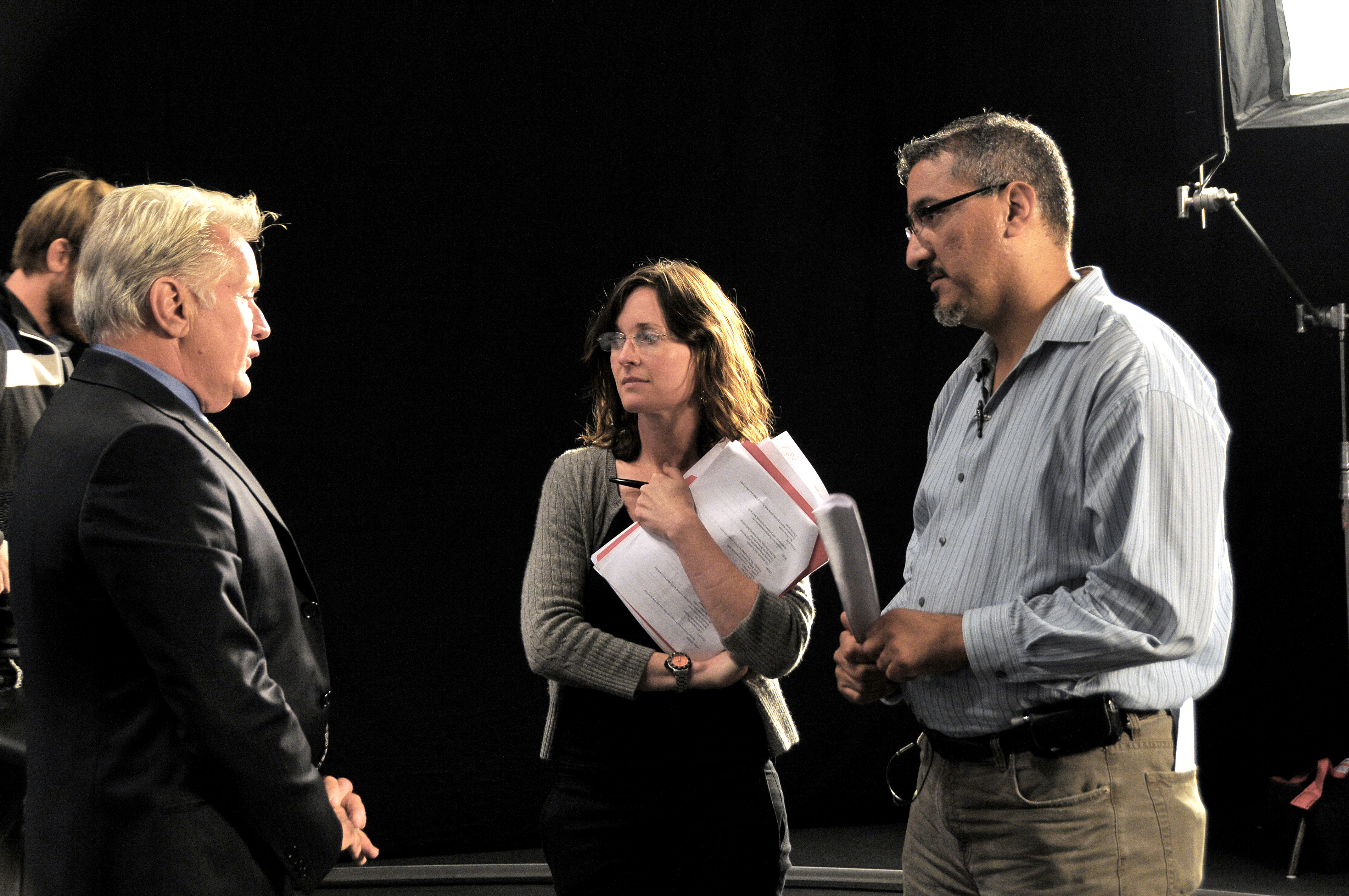Q&A with Richard Ray Perez

Richard Ray Perez (right), director and co-producer of the documentary “Cesar’s Last Fast,” talks with Martin Sheen and co-producer Molly O’Brien on the set of the film. An unfinished version will screen at the Hammer Museum tonight. (courtesy of Monkey Mind Media)
By Arit John
Oct. 6, 2010 12:31 a.m.
Tonight, the Hammer Museum and the Sundance Institute will come together to screen an unfinished version of director Richard Ray Perez’ documentary “Cesar’s Last Fast,” which follows the last few days of Cesar Chavez’s 36-day “Fast for Life” in 1988. The Daily Bruin’s Arit John spoke with Perez about his inspiration for making the film.
*Daily Bruin:* Is this your first documentary, or do you have previous experience?
*Richard Ray Perez:* No, this isn’t my first documentary, it’s my second feature documentary. … But I’ve produced three documentary series, one of which has been running for three years now.
DB: The series that has been running for three years, what does it cover?
RRP: It’s a documentary series that I’m winding up now. It’s called “In Their Boots,” and it’s a documentary series about the impact the wars in Iraq and Afghanistan are having on people here at home.
DB: What was your inspiration for tackling Cesar Chavez, and what impact has he had on you?
RRP: My fellow producer … likes to say that I was destined to make this film. My father was a migrant farm worker for 22 years, and by the time I was born, he was a factory worker. My aunts and uncles, his siblings were all farm workers, too, up until about 1942. …
And when I was 4 years old, attending Head Start in my hometown of San Fernando … there were some Chicano students who would come and volunteer at the Head Start center. This was about 1969, 1970. And during lunchtime these volunteer students would sit down with the other Head Start students. And I noticed one day that one of those Chicano volunteers was taking his grapes out of the fruit cocktail out of the lunch that we got, the sort of free government lunch.
I asked him, “Oh, why are you doing that?” And he said, “Well, because, the people who pick the grapes are treated very poorly by their bosses. They get paid very little money. They often have to live in shacks. If they complain, they get fired. It’s just a very, very hard job, and their bosses treat them horribly.”
I remember looking down at my grapes in my fruit cocktail and realizing that all of a sudden they looked very, very ugly. So I started picking the grapes out of my fruit cocktail. And pretty soon the rest of the students sitting at that table all did the same, and for the rest of the year none of us ate the grapes in our fruit cocktails that were in our lunch.
So at the age of 4, not fully understanding that there was a grape boycott going on, unbeknownst to me I became a part of that grape boycott. And as I grew older, in the town that I lived in, the residents there were big supporters of the grape boycott, and there were often picket lines around the supemarkets, discouraging people from buying grapes or lettuce. So, just growing up it was sort of that movement that was happening around me became very present.
DB: The documentary covers Cesar’s last fast. What’s the difference between a fast and a hunger strike?
RRP: A hunger strike is a transactional act. In some ways it is kind of like blackmail. When somebody refuses to eat in exchange for something, they’re trying to get somebody else to act in a specific way. A fast is a personal act, and in Cesar’s case, a penance of introspection. It’s not a transactional thing. It is an act of self-sacrifice and self-depravation. And some people do it to elicit a form of clarity. And some people do it for religious reasons, for spiritual reasons.
DB: What was Chavez’ faith?
RRP: Well, Cesar definitely had a respect for all different religions. And Cesar himself was raised a devout Catholic. His mother and grandmother really instilled the Catholic rituals and practices in him in his childhood.
That said, as he developed intellectually, one of the most important influences on him was reading Gandhi’s biography. And that opened up another world of spirituality, and how that spirituality inspired Gandhi’s dedication to social justice. So Chavez started studying a lot and seeing the similarities between many faiths, particularly similarities when it comes to social justice issues.


